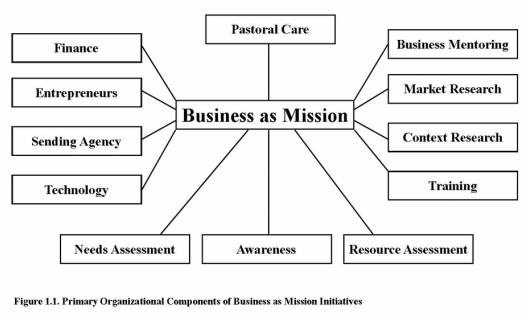|
Every mission agency wants to start up a new BAM program. Why and what is Business As Mission (BAM)? What purpose can it serve in advancing the Gospel? Can transformational discipleship be espoused through practices commonly associated with a secular lifestyle? These questions and more are ruminated in the Church and Christian ministries. What is now being introduced as utilizing business to promote missional evangelization is scrutinized by many and only fully understood by a few. The Lausanne Occasional Paper No. 59 is the organized effort of the Lausanne Committee for World Evangelization to effectively explain, and endorse, the worldwide adoption of BAM practices. The paper identifies the misconceptions of BAM implementation, and the foundational principles necessary for effective discipleship through business practices. At a meeting last summer, a question was raised, “Is it easier to turn a businessman into a Navigator, or a Navigator into a businessman?” The coordinators at the Lausanne Conference encountered the same question, and deduced the following response: “It is easier to teach ministry to a businessperson than business to a mission person. They focus on good business practice and integrating ministry into the business rather than starting a mission and trying to posture it as a business. If the business thrives, so does ministry to its employees and community, all without foreign funding or donations.” Business practices receive a bad rap due to their focus on monetary gain. Yet the focus of BAM is not to raise money purely for the dispersal of financial profits to existing Christian organizations. It is true that this is one of the goals, and is often a practice highly prioritized in BAM operations. However, the pursuit of BAM is to utilize the context of business as a powerful tool for evangelizing to the lost. In the Navigators, the Global Enterprise Network (GEN) has a wide variety of BAM works and describe them as missional enterprises. A missional enterprise (also known as Business for Transformation – B4T) is a small subset of the BAM space but is distinguished by the triple bottom line. Read more from Larry Sharp about the BAM Movement. - GEN Desk Intern For more information on the Lausanne Movement and BAM visit: http://businessasmission.com/library/articles-papers/ Tunehag, Mats, Wayne McGee, and Josie Plummer, eds. "Business Goals And Mission Analysis." Business As Mission (2008): 1-88. Lausane Occasional Paper No. 59. Lausanne Committee for World Evangelization. Web. 24 July 2015.
"Business as Mission Research." Eden's Bridge. Eden's Bridge, 27 May 2012. Web. 24 July 2015.
0 Comments
Your comment will be posted after it is approved.
Leave a Reply. |
Categories
All
Archives
March 2020
|

 RSS Feed
RSS Feed
